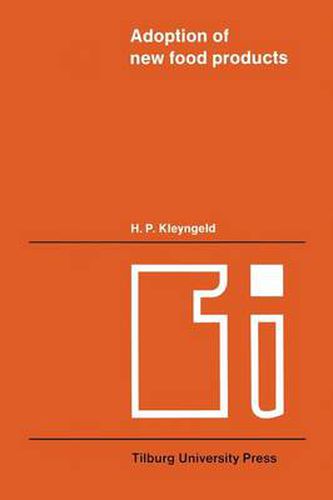Readings Newsletter
Become a Readings Member to make your shopping experience even easier.
Sign in or sign up for free!
You’re not far away from qualifying for FREE standard shipping within Australia
You’ve qualified for FREE standard shipping within Australia
The cart is loading…






This title is printed to order. This book may have been self-published. If so, we cannot guarantee the quality of the content. In the main most books will have gone through the editing process however some may not. We therefore suggest that you be aware of this before ordering this book. If in doubt check either the author or publisher’s details as we are unable to accept any returns unless they are faulty. Please contact us if you have any questions.
In this work the author reports on his research into the way food in novations are adopted. He deals particularly with whether food in novators can be distinguished, that is to say consumers who, more than other people, adopt new products not by chance but more or less systematically. The book discusses three general themes within this problem: what impels innovators, in what respects and in what characteristics are they different from others, and to what extent can their behaviour be used to fore cast the ultimate succes of an innovation. On the the basis of information from the literature and his own research findings, the author postulates that innovators’ behaviour has a number of underlying dimensions. This raises aspects of interest and involvement, innovative versus problem-solving behaviour, monomor phic versus polymorphic innovativeness, and also some implications these have regarding operationalisation of the innovators’ concept. Al though emphasis is put on the direct research implications, the discus sion of these aspects nevertheless provides a number of interesting, but more theoretical indications. The traditional image of the innovator found elsewhere in the literature is substantiated and supplemented by the characteristics of innovators disclosed by this research. Besides socio-economic criteria the research comprises a number of behavioural characteristics of in novators.
$9.00 standard shipping within Australia
FREE standard shipping within Australia for orders over $100.00
Express & International shipping calculated at checkout
This title is printed to order. This book may have been self-published. If so, we cannot guarantee the quality of the content. In the main most books will have gone through the editing process however some may not. We therefore suggest that you be aware of this before ordering this book. If in doubt check either the author or publisher’s details as we are unable to accept any returns unless they are faulty. Please contact us if you have any questions.
In this work the author reports on his research into the way food in novations are adopted. He deals particularly with whether food in novators can be distinguished, that is to say consumers who, more than other people, adopt new products not by chance but more or less systematically. The book discusses three general themes within this problem: what impels innovators, in what respects and in what characteristics are they different from others, and to what extent can their behaviour be used to fore cast the ultimate succes of an innovation. On the the basis of information from the literature and his own research findings, the author postulates that innovators’ behaviour has a number of underlying dimensions. This raises aspects of interest and involvement, innovative versus problem-solving behaviour, monomor phic versus polymorphic innovativeness, and also some implications these have regarding operationalisation of the innovators’ concept. Al though emphasis is put on the direct research implications, the discus sion of these aspects nevertheless provides a number of interesting, but more theoretical indications. The traditional image of the innovator found elsewhere in the literature is substantiated and supplemented by the characteristics of innovators disclosed by this research. Besides socio-economic criteria the research comprises a number of behavioural characteristics of in novators.